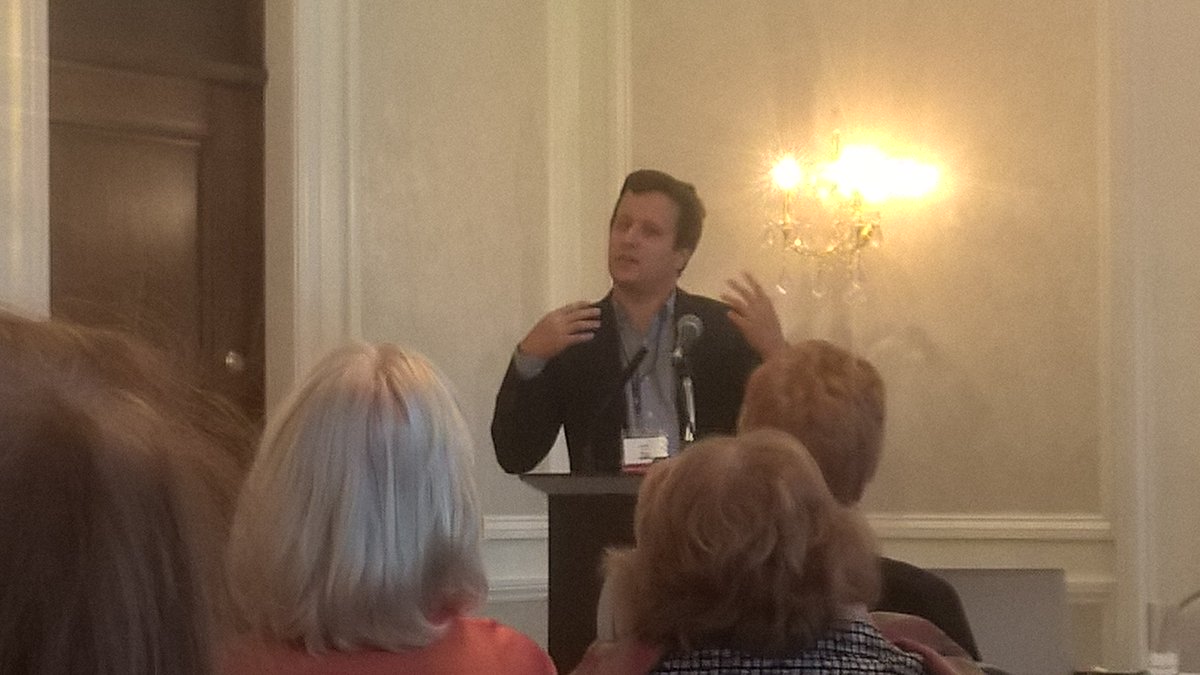GCGS Days 1 and 2 - Sat, 14 Oct 2017
#cangensummit2017 – A couple of great days at the Great Canadian Genealogy Summit in Halifax, Nova Scotia.
Friday afternoon the started with Jan Raska from Pier 21, of the Canadian Museum of Immigration providing a very interesting keynote for the almost 60 attendees who arrived in time for his talk.

Saturday was a full slate of talks. There were 12 presentations in two tracks. I’d say attendance was about 100 split fairly evenly between the two rooms. Talking to different people, I think it’s possible we had at least 8 of Canada’s 10 provinces represented here, plus people from a number of States as well.
My talk on intro DNA went well with good response and questions. I had anticipated many of the questions. To my recommendation that adoptees test everywhere was a suggestion that one should test at AncestryDNA because it has the largest number of testers and then transfer to the others to save money. I responded that the viewpoint of CeCe Moore and others was to “fish in all ponds” to ensure full coverage, especially since 23andMe does not accept transfers.
At lunch I went across the street to Your Father’s Moustache with many of our group. It was a full lively pub and eatery with many entertaining stache-objects decorating the place: “I moustache you a question, but will shave it for later.” – “I’d love to stay but I really moustache.”
I had a very nice conversation between sessions with Fred Pafford who came in from Newfoundland. He’s got over 25,000 in his tree which he programmed and put in a FoxPro database two decades ago. Recently he’s added his tree to MyHeritage and has been getting into DNA in a big way to help solve his brick walls. We both chuckled that DNA always seems to add many more puzzles than it solves.
Following the last session of the day, I went into the Exhibition Hall, something you wouldn’t expect to see at a small conference like this one. There were 8 vendors and even a couple of vendor mini-presentations earlier in the day. I went to the FamilyTreeDNA table where Derrell Oakley Teat was representing the company. She flew up from her home in Florida and on Wednesday will be heading off for Dublin, Ireland which is where Derrell told me AncestryDNA sends their Canadian samples for analysis. I didn’t realize that.
One more day for the GCGS 2017.




 Feedspot 100 Best Genealogy Blogs
Feedspot 100 Best Genealogy Blogs





